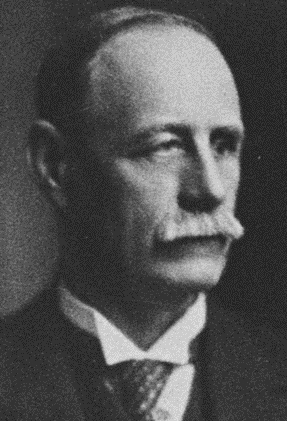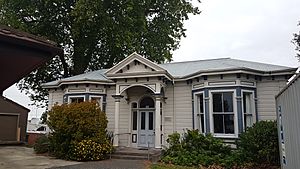Douglas Lysnar facts for kids
William Douglas Lysnar (born 30 April 1867, died 12 October 1942) was a New Zealand politician. He was usually known as Douglas Lysnar. He belonged to the Reform Party.
Contents
Early Life in New Zealand
Douglas Lysnar was born in Onehunga, Auckland, New Zealand. This was on April 30, 1867. His father was a school teacher and taught him at home. In 1879, his family moved to Gisborne.
Douglas Lysnar's Political Career
Local Government Role
From 1908 to 1911, Douglas Lysnar served as the Mayor of Gisborne. This means he was the main leader of the city's local government.
Member of Parliament for Gisborne
Douglas Lysnar was elected to the New Zealand Parliament. He represented the Gisborne area. He was a Member of Parliament (MP) from 1919 until 1931.
He was part of the Reform Party. In the 1928 election, he ran as an Independent candidate. This meant he wasn't officially tied to a party. However, he still supported the Reform Party. He won that election.
In 1930, he decided to become fully independent. He no longer supported the Reform Party. In the next election in 1931, he ran as an Independent. But he lost to David Coleman from the Labour Party.
During his 1919 election campaign, he hired Albert Davy. Davy helped organize his campaign. Albert Davy later became a very good organizer for the Reform Party.
Douglas Lysnar had a brother named Frederick J. Lynsar. Frederick ran for the Liberal Party in 1920. He was a candidate in the Bay of Plenty area. However, he lost to the Reform Party candidate.
In 1935, Douglas Lysnar received a special award. It was the King George V Silver Jubilee Medal. This medal honored the 25th year of King George V's rule.
Life in Gisborne and Kelvin Rise
A house called Kelvin Rise was built in 1886. An accountant named James Charles Dunlop owned it first. In 1898, Douglas Lysnar bought the house and its land. He made the house bigger in 1900. In 1919, he added a ballroom and a tower.
Kelvin Rise became a very important place for social events in Gisborne. Many important visitors were welcomed there over the years. Douglas Lysnar passed away on October 12, 1942, in Gisborne. He was buried at Makaraka Cemetery.
In his will, Douglas Lysnar wanted Kelvin Rise to become a museum. His daughter gave the land to the city council in 1954. This land became a park. She also sold the house to the city for a very small amount of money.
Kelvin Rise opened as a museum and art gallery in 1955. In 1975, the parts of the house added in 1919 were moved. They went to the city's marina. The rest of the house was moved to a new spot on the land. This made space for a new museum building. This new building is known as the Tairāwhiti Museum.



